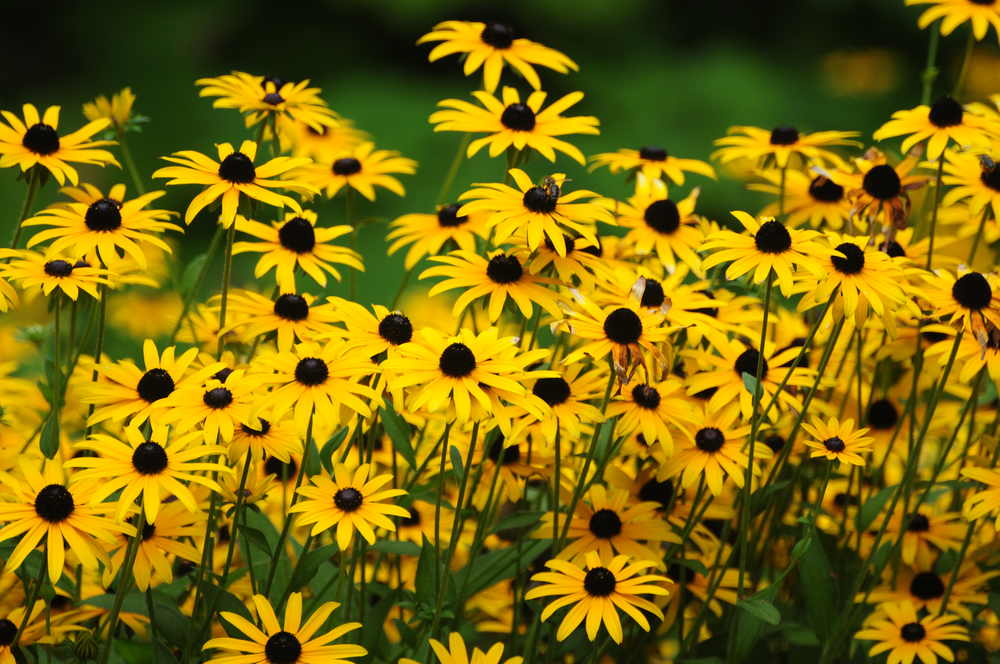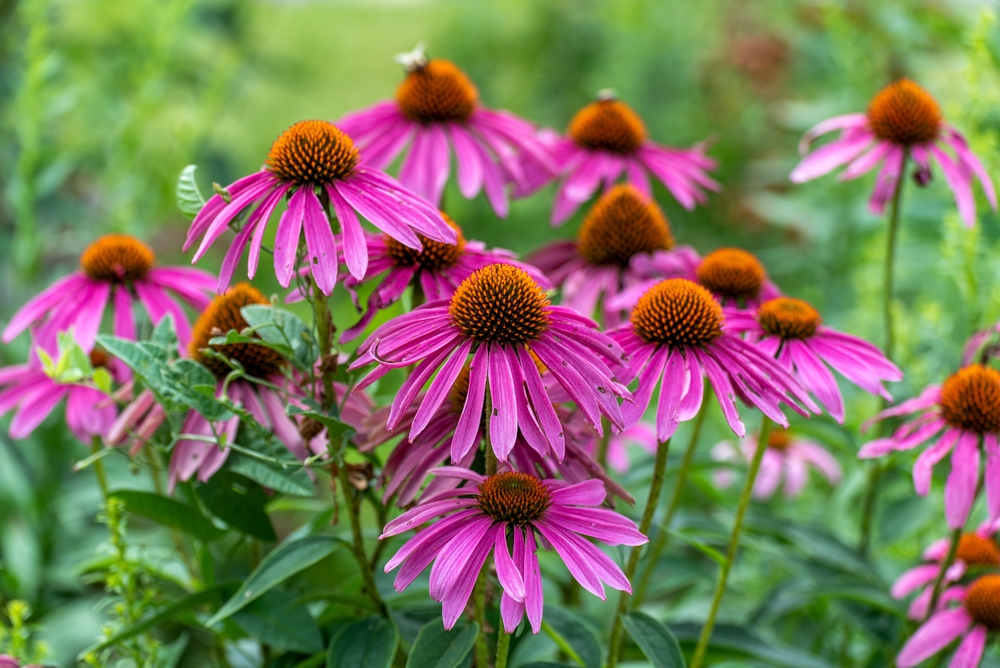
one
two
three


After our article on evaluating your landscape, you may have found some plants that are not doing well and need to go. You may also have found some holes in your landscaping. Consider putting one of our favorite perennials in instead. These perennials are hardy and do not need much water and fertilizer to thrive.

Catmint does great in a well-drained area in the sun. There are several varieties that all grow vigorously. The height varies by variety but is usually around 18” – 24” tall. Catmint can grow like crazy, so make sure to give it 2 to 3 feet of spacing for room to spread. When the flowers fade, shear them off to promote more blooms. Catmint is drought tolerant once established, and the leaves are edible. The scent repels some insects, including aphids and squash bugs. You will also notice that small white butterflies love this plant.

Black-eyed Susans are easily recognizable with their yellow petals and dark brown or black centers. This member of the daisy family is native to the Eastern United States but has been naturalized across the country. This perennial is tough as nails and grows to be two to three feet high. Pollinators love this flower, and the Silvery Checkerspot butterfly grows on it. The cut flowers last a week to ten days in water, bringing the sunshine in with them. These hardy flowers will self-seed. If you want more of these in your garden, then crush up the seed heads in the fall and leave them in the mulch to sprout.

The purple coneflower is native to the central and eastern United States. It has pinkish-purple petals with a dark brownish center topped by an orange cap. This tough plant is drought tolerant once established and is also deer, heat, humidity, and salt resistant. It grows to be two to three feet tall and will grow in full sun and partial shade. Pollinators, especially butterflies, love coneflowers. Birds, especially American goldfinches, will eat the seeds if you leave them on the plant. Coneflowers make a nice border or plant a clump of them in the landscape. Varieties have been bred that are red, white, pink, orange, yellow, or red as well.

Daylilies have big, showy flowers in a variety of colors. They reach from one to four feet high, depending on the variety. Blooming at various times of the spring and summer, daylilies provide an important source of nectar to butterflies and hummingbirds. They grow in full sun to partial shade. While each bloom only lasts a short time, the plants have numerous blooms over a long time period. Daylilies are poisonous to cats, so do not plant them if you have outdoor or feral cats around. We prefer the re-blooming varieties for more color throughout the season.

There are over 27,000 registered varieties of Dianthus. Some of them are perennial. The flowers are fragrant and can be pink-lilac, pink-purple, or white. They have frilly margins, and some have a border around the petal. Dianthus makes a great border or is part of a landscape bed. They grow from four inches tall to four feet tall, depending on the variety. The plant is resistant to deer but vulnerable to rabbits. The petals are edible if grown organically and are often crystallized and used on cakes. We use the shorter perennial versions as the front-row border plants in many of our designs.

Liriope is a low-growing ground cover. It comes in green and variegated with white. We prefer the variegated varieties. Most varieties grow from ten to eighteen inches tall. An evergreen, Liriope has lavender, purple, pink, or white flower spikes during the summer. It grows in shade or full sun and is heat, drought, and salt tolerant. In addition to being used as a groundcover, these tough plants can be used as edging or massed in a flower bed.

Coral bells are a low-growing perennial that has interesting foliage in colors ranging from green to yellow, red, and Burgandy. It has a tidy, clumping habit. The tiny bell-shaped flowers draw bees and butterflies. Depending on the variety, this plant will prefer partial shade. The leaf colors can be a stunning contrast to the dark mulch and other plants in your garden. Coral bells may need to be divided every three to four years to do well. They prefer the soil on the drier side but tolerate heat well.

If you need a perennial for the shade, you need a Hosta. Most Hostas are between 1-2.5 feet tall and are grown for the foliage. Some varieties have fragrant, showy flowers in white, lavender, or purple. The leaves range from yellow-green to dark green to bluish-green, and variegated varieties are common. Hostas will fade or change color in the sun and get burned up easily. However, in the shade, the Hosta may outlive you if given reasonable care. They do prefer an inch of water a week to do well, so make sure to water frequently, especially when the plants are young and getting established.

These clump-forming perennials have fern-like leaves and thrive in partial to full shade. The flowers are feathery plumes in pink, red, or white. Bees love Astilbe. The plants are tolerant of heavy shade, black walnut, deer, and rabbits. The mounds can grow to be one to five feet tall. The leaves come in red/Burgandy, brown/copper, and green. They look nice in containers, walkways, and woodland areas.
Need Some Help?
Royal Creations Architectural Landscaping can help you choose the best perennial for your space. We can also plant the perennials and care for your landscape beds for you. Schedule a consultation with our plant expert for ideas, or to get on our schedule.